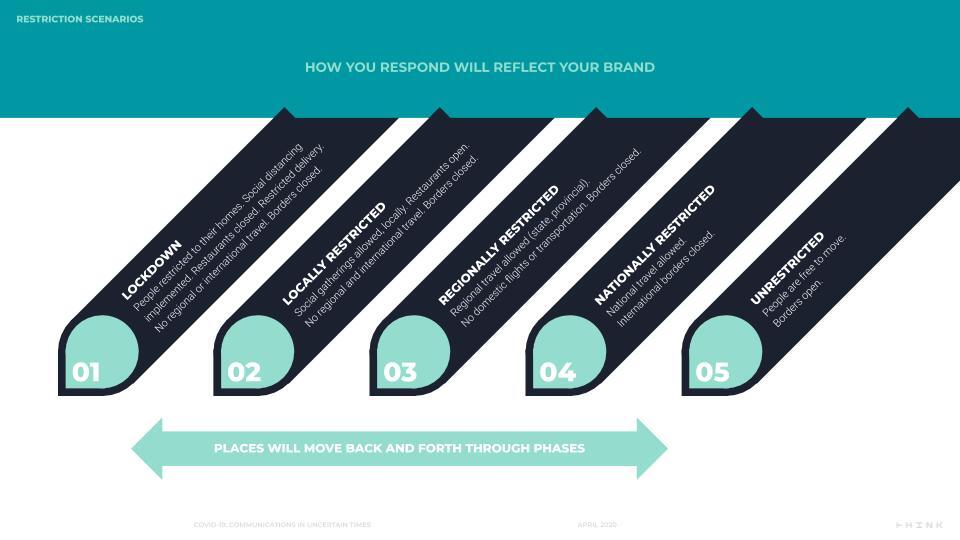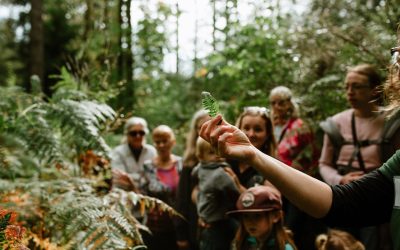Before travel restrictions are lessened globally, many in the tourism industry are asking about how to appropriately promote future travel planning in a way that’s not tone-deaf. As more governments discuss opening borders, communities may feel worried about the risks of inviting in strangers, while travellers could be grieving a loss, struggling financially, or simply hesitant to resume their old travel routines for concerns of safety.
As restrictions begin to lift, saying the right thing at the right time will be a delicate dance for your destination. You can use these guidelines to help your DMO approach online content and communication in a practical and proactive way.
1. Use restriction scenarios to plan for phases of content
Travel across the world and in your destination will likely open up in a phased approach, and each phase will call for different messages. Some destinations might find themselves breathing easier as soon as local travel is allowed to resume, while others might continue to feel constrained until national borders are reopened and flights return. Either way, planning content around restriction scenarios can help you and your team be better prepared to speak to the needs and expectations of your audience throughout these stages of reopening.
There are likely at least three different audiences you can plan messages for during each of these scenarios: locals, advocates, and future visitors. Consider what each group needs and the kinds of emotional responses they may have at different stages of the crisis.

2. Lean on emotional lenses to help decide which messages are appropriate at different times.
Restriction scenarios alone won’t give us in-depth insight into how people react within each phase. Anticipating the range of emotions visitors in specific target markets may have throughout the lockdown and restart phases can help your team identify a tone and voice that complement your brand, while respecting your audience’s space and individual experiences. Consider how people feel to find true empathy.
The image below shows Destination Think’s early development of an anticipated range of emotions travellers may experience during the lockdown restriction scenario. As this period continues, the stages between “bored” and “anxious and uncertain” were the ones our team observed that most DMOs could address through communication.

Obviously not all developments throughout the COVID-19 saga can be predicted, but emotional lenses can shine a guiding light on ways to modify messages that better connect on a human level.
3. Work more collaboratively with stakeholders and industry
In a time when many organizations are working with limited resources but toward a common goal, DMOs should rethink how to engage and support stakeholders in their everyday content. In the past, the DMO has typically held a role to define messaging for destination communications, but now ideas for creative campaigns and communication that foster connection can come from anywhere. Don’t reinvent the wheel: see how talents and connections within a community can combine to make content and messages stronger. Whether it’s leading a community initiative or leaning on the industry to unearth compelling stories and personal connections, DMOs now have a greater opportunity to be content gatherers and curators, rather than purely creators.
Place a greater priority on owned and earned, rather than paid media. In the world of organic content, authenticity will always work harder. It’s all about quality over quantity. This time could give you and your industry partners a chance to practice deeper storytelling rather than focusing on promotional messages.
4. Use your values to clarify your DMO’s role
Hone in on your brand’s values to define your DMO’s role and what your audience expects from you. In a time when DMOs are often torn between roles that range from news providers and virtual fitness class finders to recipe sites and handwashing authorities, it’s common to wonder what exactly your role is right now. The answer will be different for everyone and will most likely be found through a deeper examination of your brand’s values. The messages you share should show, not tell, your audience about the humanity reflected in your destination, your residents, and your culture.

The Destination Think team discussed these four principles along with many examples from DMOs during our live Virtual Forum event. Find the full presentation and slides here.
Support for your DMO
From Bermuda to California to Campbell River, our team helps tourism destinations respond to crises and work toward recovery with poise and confidence. Speak to us to learn about our collaborative approach to strategy, communications, and creative solutions or click here to send us your RFP.








0 Comments